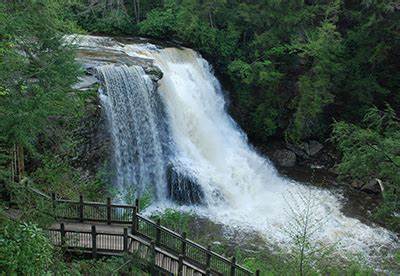DNR decision on bridge project for protected river
The Maryland Department of Natural Resources (DNR) has reached a decision regarding an application from Garrett County concerning a protected river. The application, jointly submitted by Garrett County and the Maryland Department of Transportation State Highway Administration, pertains to the replacement of the bridge on Swallow Falls Road within the Youghiogheny Scenic and Wild River Corridor.
Given the unique classification of the area, the DNR was required to grant an exception to the protective regulations to allow for the proposed construction. A comprehensive review of the county’s application was conducted by the DNR. The proposed construction entails the replacement of the existing bridge with a new approximately 35-foot wide bridge on an offset alignment in the vicinity of the current bridge.
In a letter addressed to Garrett County’s engineering department, DNR Secretary Josh Kurtz expressed the department’s thoughtful consideration of the river’s scenic and wild attributes. The letter stated that, after this consideration, the DNR is conditionally granting the county’s request for an exception. The DNR determined that this exception aligns with the legislative intent of the Scenic and Wild Rivers Act and will not compromise the river’s scenic and wild character.
While acknowledging that the project will influence the immediate surroundings of the bridge, Secretary Kurtz emphasized that the impacts will be minimized to the necessary extent. The bridge’s design will even permit the removal of the central pier structure from the river’s center. Secretary Kurtz further noted that the broader Scenic and Wild Corridor will remain unaffected by the new bridge’s construction in its offset alignment.
Highlighting the importance of maintaining traffic flow in the area for safety and emergency access, Secretary Kurtz underscored that strict adherence to the regulations would impose undue hardship on the county, community, and the general public utilizing the roadway.
Concerns about the impact on the old growth hemlock forest within Swallow Falls State Park were addressed by Secretary Kurtz. He outlined plans for conservation and mitigation practices to offset these impacts. Among the conditions attached to the exception, the DNR stipulated that the new bridge’s width be limited to 28 feet, consisting of two 10-foot-wide travel lanes and two 4-foot-wide shoulders. The county is also required to minimize tree clearing, restrict equipment to existing cleared areas, engage in reforestation efforts with native species, and establish a 15-year Forest Conservation and Management Plan for the affected area to ensure the long-term well-being of the old growth forest.
Furthermore, the letter detailed the proposal to designate the old growth hemlock forest in Swallow Falls State Park as an Irreplaceable Natural Area, emphasizing that the bridge replacement project would not adversely affect the habitats or natural resources earmarked for this designation.
In a parallel development, the DNR engaged the Youghiogheny River Advisory Board, which had not convened in 17 years, to review the bridge replacement proposal initiated by Garrett County and the Maryland Department of Transportation State Highway Administration. The advisory board, composed of eight members, recommended that the new bridge follow the same alignment as the existing structure, not exceed 28 feet in width, and be closed during construction without a temporary structure.
Paul Peditto, the DNR’s acting assistant secretary for land resources, acknowledged the project’s impact on the local ecosystem. He emphasized the agency’s commitment to balancing environmental concerns with the needs of the community. While acknowledging the necessity of disturbing the bridge’s immediate surroundings, Peditto highlighted the objective of creating a safe and reliable bridge to minimize future disruptions. He anticipates the involvement of experts from various fields to ensure ecological impacts are minimized throughout the design and construction phases.
The new bridge is projected to be operational by 2026, with ongoing oversight by the DNR to ensure adherence to environmental considerations.

Posted on 08/21/2023 in Uncategorized # deep creek lake, garrett county, maryland, mountain maryland









